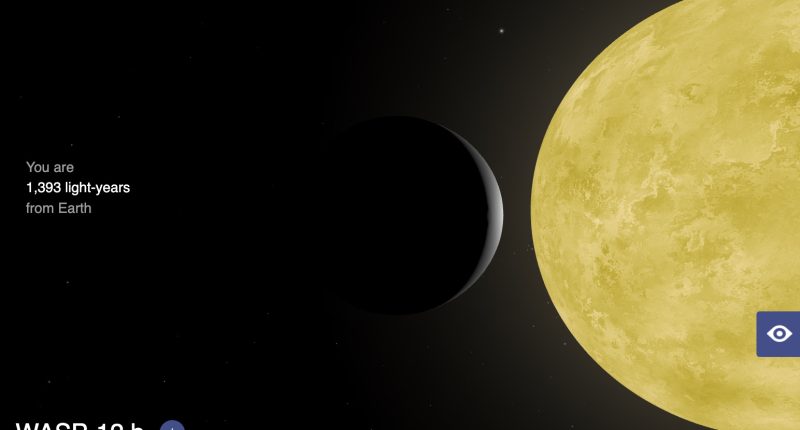AN ALIEN world is officially doomed as scientists reveal exactly how and when the planet will be totally destroyed.
The Jupiter-like WASP-12b is set to meet a tragic end – and has already been “deformed” as it awaits its fate.
It’s what’s known as a “hot Jupiter”, orbiting extremely close to its sun.
Scientists previously thought that the planet would eventually crash into its star in 10 million years, but new research suggests it’ll happen in just three million years instead.
The planet is already deformed and being “torn apart” due to it being so close to its star.
“The star’s scorching heat is slowly stripping away and devouring the planet’s atmosphere,” Nasa explained.
“A hulking monster of a star is stealing pieces of its nearby planet, WASP-12b, to assemble itself into the ultimate Frankenstein creation.
“The extreme gravity is stretching the hot gas giant into the shape of an egg, all the while slowly cannibalizing the planet.
“Relatively soon this planet will be completely devoured by its hungry star.”
DEATH STAR
The exoplanet (a planet outside of our solar system) was discovered back in 2008.
Most read in Science
It’s around 1.5 times the mass of Jupiter and 1.9 times the size.
And a year on the planet is fleeting, with WASP-12b taking just over a day to orbit its star.
This gas giant was discovered using the “transit” method, which is when scientists detect a dimming of a star’s light as the planet passes in front of it.
Now scientists have measured the planet’s “orbitcal decay”, revealing that it will fall into its star in just three million years.
“WASP-12b is a very extreme planet,” said study author Pietro Leonardi, of the University of Trento, speaking to Universe Today.
“It is indeed part of the sub-category called ultra-hot Jupiters. The planet is very close to its host star, orbiting it in just 1.09 days and having a surface temperature of 2600 K (4,220F / 2,300C).
“Due to its extreme vicinity to its host star, the planet feels a strong gravitational pull that strips part of its atmosphere of heavy metals, which create a disk around the star.”
This study was published in arXiv.
What is an exoplanet?
Here’s what you need to know…
- An exoplanet is a planet that is located outside of our Solar System and one that is orbitting its own star, like how Earth orbits the Sun
- They are very hard to see with telescopes because they are often hidden by the brightness of their star
- Nasa sent the Kepler space telescope into orbit with the purpose of finding Earth sized exoplanets that might support life
- Over 5,500 exoplanets have been discovered so far and more missions to find even more exoplanets are planned
- A good way to spot an exoplanet is to look for “wobbly” stars because a disruption to star light can indicate that a planet is orbitting it and therefore blocking out light on occasion
- Exoplanets are very common in the Universe and the more we find that look like Earth the closer we get to knowing if we’re not alone out there











